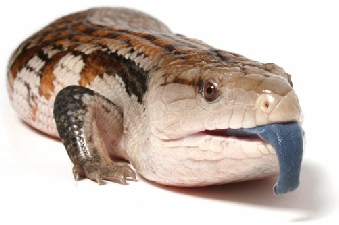


BLUE TONGUED SKINKS
 Blue-tongued skinks comprise The Australasia and Asian genus, Tiliqua, which contains
some of the largest members of the skink family (Scincidae). They are commonly called
blue-tongued lizards or simply blue-tongues in Australia As suggested by these common
names, a prominent characteristic of the genus is a large blue tongue that can be
bared as a bluff-warning to potential enemies.
Blue-tongued skinks comprise The Australasia and Asian genus, Tiliqua, which contains
some of the largest members of the skink family (Scincidae). They are commonly called
blue-tongued lizards or simply blue-tongues in Australia As suggested by these common
names, a prominent characteristic of the genus is a large blue tongue that can be
bared as a bluff-warning to potential enemies.
Blue-tongued skinks are closely related to the genera chyclodomorphus and Hemisphaerodion. All species are found on mainland Australia with the exception of Tiliqua gigas, which occurs in New Guinea and various islands of Indonisia. One subspecies of Tiliqua scincoides is also found on several small Indonesian islands between Australia and New Guinea Tiliqua nigrolutea is the only species present in Tasmania. With the exception of the pygmy blue-tongue, they are relatively large lizards (up to 45 cm total length), light-bodied, short-limbed, broad with distinct heads and dull teeth.
Most species are diurnal, ground-foraging omnivores, feeding on a wide variety of insects, gastropods, flowers, fruits and berries. The pygmy blue-tongue is again the exception, being primarily an ambush predator of terrestrial arthropods. All are viviparous, with litter sizes ranging from one to four in the pygmy blue-tongue and shingleback to five to 24 in the eastern and northern blue-tongue
Blue Tongued Skinks are commonly kept pets and tame down well with constant handling although they can sometimes be quiet shy. They will need a large vivarium as they can grow to nearly half a metre as said earlier.